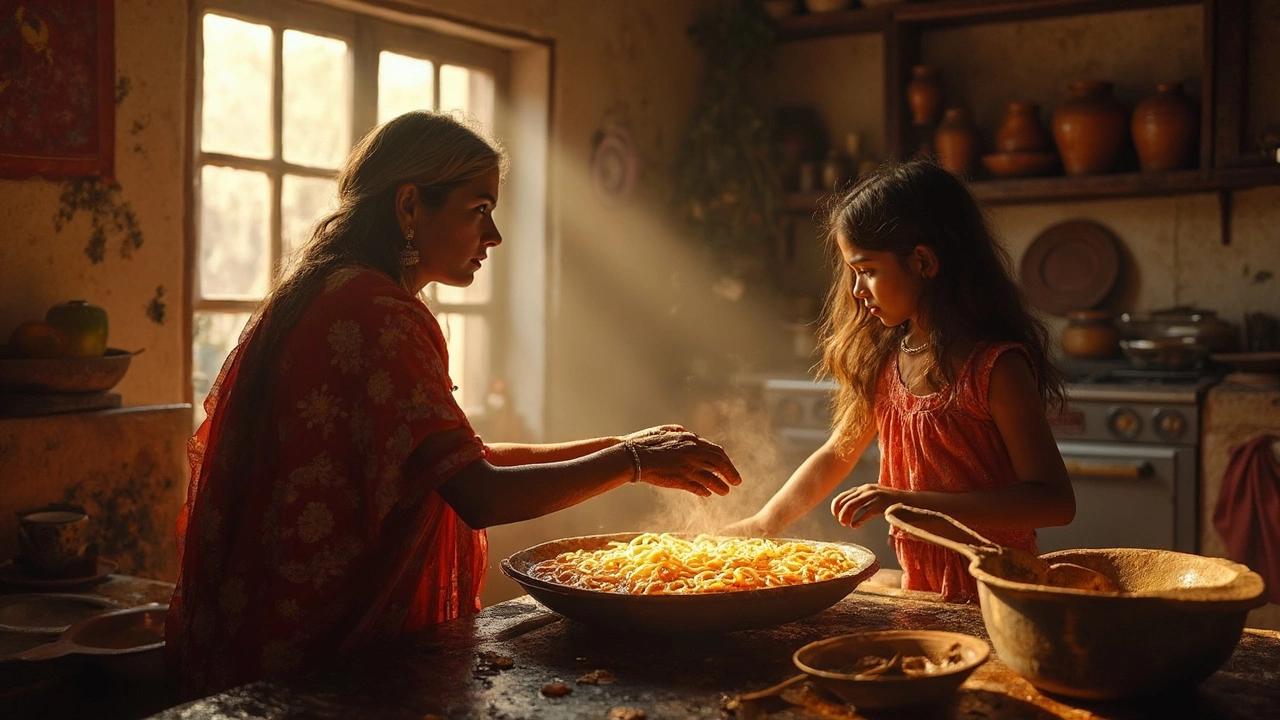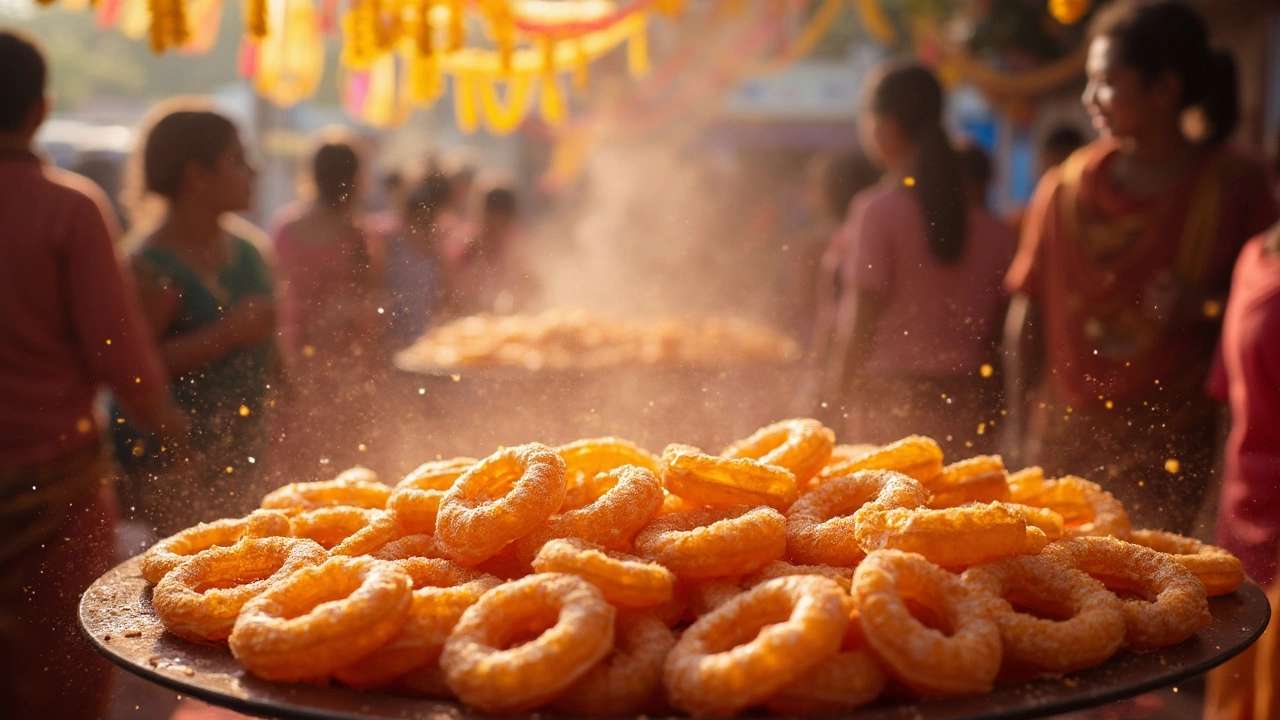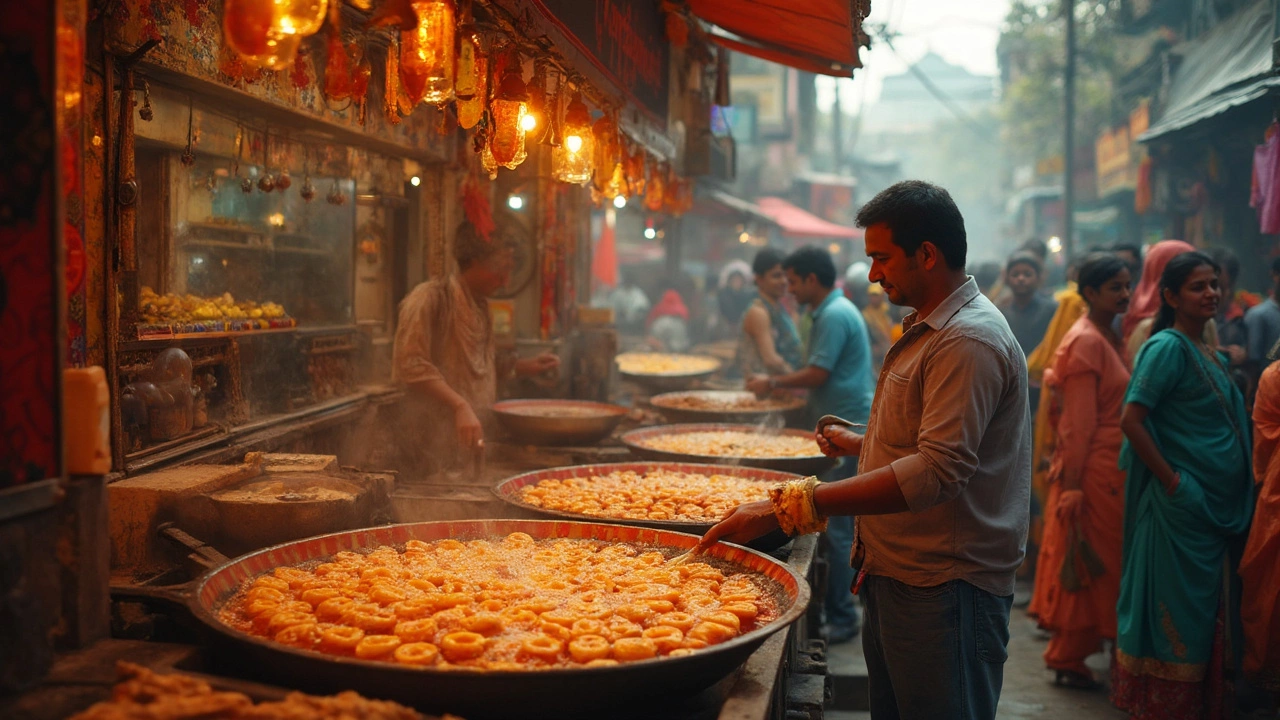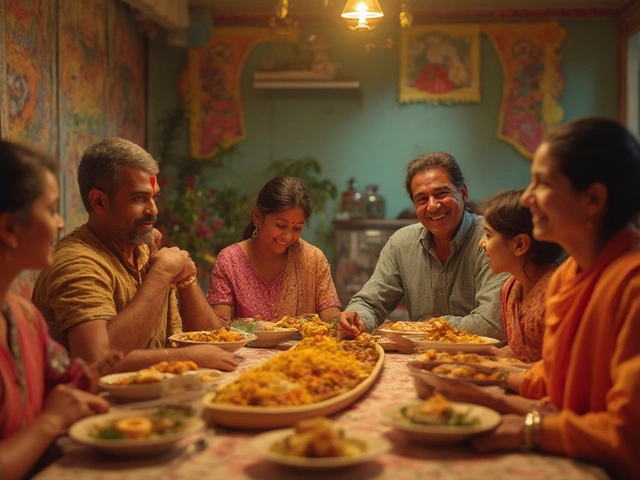Alright, so you've probably heard of jalebi, right? That golden, syrupy delight that seems almost too good to be true. When it comes to Gujarat, jalebi isn't just a dessert—it's a part of the culture. You know how French folks have their croissants with coffee? Well, in Gujarat, weekends often kick off with a plate of hot, crispy jalebi paired with some spicy fafda. It's like the good-morning hug everyone needs.
Now, you might wonder what's so special about Gujarat's take on jalebi. It's not just about the ingredients or how it's cooked. It's about tradition. This sweet treat winds its way into festivals, celebrations, and casual Sunday breakfasts. And trust me, the way jalebi is enjoyed here adds a unique twist that makes it distinct from other versions you'll find elsewhere. So, want to dive into how this humble sweet became a big deal? Let's explore.
- The Sweet Origin of Jalebi
- Cultural Significance in Gujarat
- How Jalebi is Made
- Tips for Enjoying Jalebi in Gujarat
- Making Your Own Jalebi at Home
The Sweet Origin of Jalebi
So, where did this delightful spiral of joy, known as jalebi, actually come from? Well, it's got a bit of a journey. Originally, jalebi's ancestor, 'zalabiya,' found its roots in the Middle East. This was way back during the medieval times, and it slowly made its way to the Indian subcontinent. By the time it arrived in India, it hitched a ride on the waves of trade and cultural exchange.
Now, you might be wondering, “How did it become so popular in places like Gujarat?” That's where the magic of adaptation happened. Over time, Gujaratis embraced jalebi, putting their own spin on it with local ingredients and techniques. This sweet swiftly became integral to festive occasions and everyday life.
A culinary historian once said,
“Jalebi is not just a dessert in places like Gujarat; it's a celebration of the senses, a harmony of taste and tradition.”This quote pretty much sums up how jalebi went from an exotic sweet to an everyday delight in households across Gujarat.
Interesting tidbit: In Gujarat, jalebi is best savored with fafda, especially during festivals like Dussehra. It's a combo that has created a cult following—kind of like the region's version of peanut butter and jelly. Through the centuries, jalebi has crafted its story, adapting and evolving but always staying at the heart of Gujarati revelry.
Cultural Significance in Gujarat
If you've ever been to Gujarat, you've probably noticed that food is a huge part of their cultural identity, and jalebi plays a starring role in this culinary landscape. It's not just a food item; it's a symbol of joy and celebration. Whether it's a wedding, Diwali, or even a simple weekend breakfast, you'll see jalebi taking center stage.
Gujaratis are known for their hospitality, often serving guests with an assortment of homemade sweets, and jalebi usually makes the cut. Why? It's simple, sweet, and satisfies that universal craving for sugary treats. During festivals like Makar Sankranti and Janmashtami, jalebi gains an almost iconic status. It's like the ultimate comfort food that brings people together.
The love for jalebi is so ingrained that you can find it ubiquitously across street stalls, sweet shops, and grand hotels alike. Imagine walking through the vibrant streets of Ahmedabad, and bam, the scent of freshly made jalebi wafts over. It's irresistible! And here's a fun fact: a survey once pointed out that jalebi was repeatedly mentioned as a must-try food by tourists visiting Gujarat, and frankly, it's easy to see why.
| Event | Role of Jalebi |
|---|---|
| Weddings | Served with traditional meals and often part of wedding buffets. |
| Diwali | A key sweet distributed and shared among friends and family. |
| Makar Sankranti | Paired with fafda for a traditional breakfast or snack. |
In many ways, jalebi isn't just about taste—it's about community and tradition. It's about sharing moments and savoring the simple pleasures. So next time you find yourself in Gujarat, remember to grab a piece of this sugary swirl. You'll not only taste a great dessert but also get a slice of the state's rich cultural tapestry.

How Jalebi is Made
Making jalebi is like crafting a piece of art—a scrumptious one, of course! You start with a batter made from all-purpose flour, yogurt, and a bit of warm water. Think of it as the foundation for your crispy, sugary creation. This batter needs to sit for a while, so it gets nice and bubbly, almost like a mini science experiment. Fermentation is key here, as it gives jalebi its distinct chewy texture inside while keeping it crisp on the outside.
Once your batter is ready, it's time for the fun part—frying. The batter goes into a piping bag or a specially designed squeeze bottle. Then, it’s all about making those recognizable spiral shapes directly into hot oil. Watching the batter transform into golden circles as they sizzle away is kind of hypnotic. It’s like watching the magic happen in real-time.
But hold your horses, because we’re not done yet. After the frying comes the sugar syrup dip. Here’s where you get that extra sweetness—jalebis are dunked in a warm sugary syrup flavored with a hint of saffron and sometimes cardamom. This spicy sweet twist is what makes jalebi stand out as a traditional Gujarat sweet.
The syrup should be sticky but not too thick, enough to coat the jalebi without turning it into a soggy mess. It’s a bit of a balancing act, but when you get it right, each bite is a crunchy, juicy explosion of flavor. And let me tell you, enjoying fresh jalebi is a game-changer. Pair them up with some spicy faafda, and you’ve got a breakfast that's practically a rite of passage in this region.
Tips for Enjoying Jalebi in Gujarat
So, you're in Gujarat and craving that perfect bite of sweet, crispy jalebi? You've come to the right place! Enjoying jalebi here is about more than just finding a good spot—it's about soaking in the culture, the vibe, and of course, the taste.
First off, timing is everything. In Gujarat, jalebi is usually savored fresh in the mornings or as a quick evening bite. You'll find vendors setting up early, with the sweet aroma of jalebi batter frying filling the streets. If you want to experience it like a local, head out around breakfast time or just before sunset.
- Street Vendors: Some of the best jalebis are found at local street stalls. These aren't just any stalls; some have been perfecting their recipe over generations. Look for a vendor with a bustling crowd—chances are their jalebi is worth the wait.
- Savor with Fafda: A classic combo in Gujarat is the jalebi and fafda duo. The crunchy, spicy flavor of fafda pairs perfectly with the sweet, syrupy jalebi. It's like the yin and yang of Gujarati snacks.
- Festivals and Celebrations: If you happen to be in Gujarat during a festival, don't miss out on the jalebi offerings. It's often a staple in celebratory feasts and adds a sweet finish to the festivities.
Most importantly, enjoy it fresh. The beauty of jalebi lies in its crispiness, which tends to diminish as it cools down. So once you've got that plate in hand, dig in while it's hot and fresh.
Lastly, a quick pro tip: if you're planning to take jalebi back home, make sure it's packed in a way that keeps it from getting soggy. A sturdy box with some tissue paper can help keep it crispy during transport.
So, are you ready to get your hands sticky with this delicious treat? Whether you're at a bustling market or a quiet local cafe, indulging in jalebi right here in Gujarat is a sweet journey you won't forget.

Making Your Own Jalebi at Home
If you've ever tasted the crispy, syrupy goodness of a Gujarati jalebi and found yourself craving it again, why not try whipping up a batch at home? It's not as daunting as it sounds, and the results are totally worth it. Here's a simple guide to get you started on recreating this iconic Gujarat sweet.
First, let's talk ingredients. You'll need some basics:
- 1 cup all-purpose flour
- A pinch of baking soda
- 1 teaspoon of yeast
- 1 tablespoon of ghee
- Water
- Sugar
- Saffron or cardamom for flavoring
Start by making the batter. Mix together the flour, baking soda, yeast, and enough water to get a smooth, slightly thick consistency. You want it free of any lumps. Let this sit for about an hour to ferment a bit.
While that's resting, let's work on the syrup. In a saucepan, combine equal parts sugar and water. Bring it to a boil until it forms a syrup. Add saffron or cardamom to give it that traditional taste.
Once the batter is ready, it's time to fry. Heat up some ghee in a pan. Now, the trick is to use a piping bag or a plastic bag with a small hole to pour the batter in spiral shapes. Fry these spirals until they're golden and crispy. As soon as they're out of the ghee, dunk them into the syrup for a few seconds so they soak up all that sweet goodness.
Before you know it, your kitchen's filled with the heavenly aroma of fresh jalebis!
If you're more of a visual learner, here's a quick recap:
| Steps | Description |
|---|---|
| 1 | Mix your dry ingredients with water to form a batter. |
| 2 | Let it ferment for about an hour. |
| 3 | Make a sugar syrup with flavoring. |
| 4 | Heat up the ghee and pipe out the batter in spirals to fry. |
| 5 | Dunk the fried spirals in syrup momentarily. |
And there you have it! Homemade jalebis, just like you'd find in the streets of Gujarat. Perfect for impressing friends, or just treating yourself. Give it a try and taste a piece of Gujarati culinary culture right from your kitchen!





